The 10 Steps on How Your Diamond Ring Gets Graded and Certified
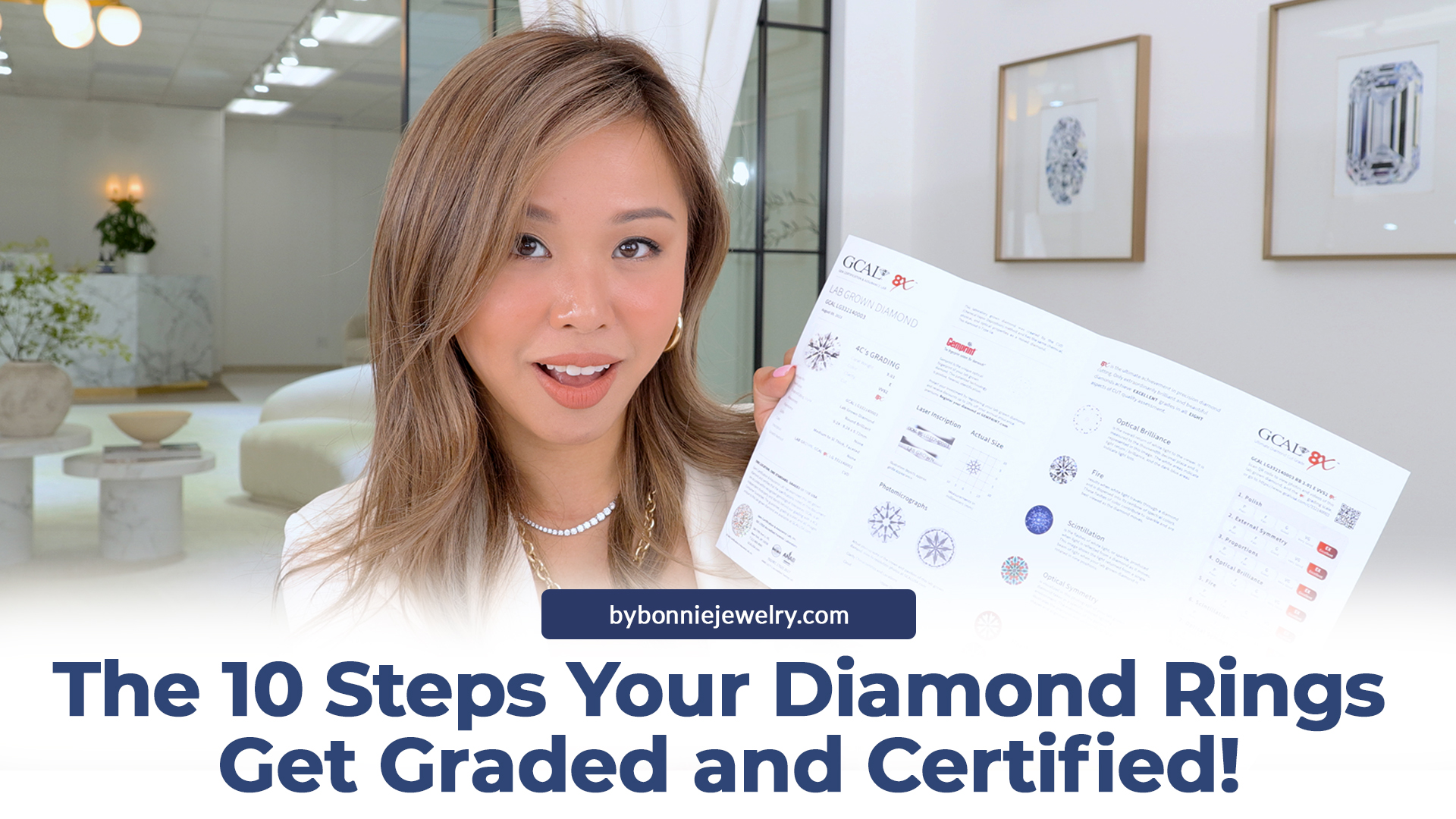
Hello, everyone! Welcome back to our By Bonnie blog, where we talk about all things diamonds! Today, we have some crucial information to share with you. We strongly advise against purchasing a single diamond until you've read this blog post (and watched the accompanying video). Why? Because we're going to guide you through the fascinating journey of how a diamond, the very one you're about to invest thousands of dollars in, is meticulously graded and certified.
We'll delve into all the intricacies featured on the diamond certificate: color, clarity, cut, fluorescence, and more!
We understand that in this age of Google research, you're eager to gain a deeper understanding of things you invest your time and money in. Reading this blog will not only protect you but also shed light on the common misconceptions and mistakes made when interpreting these certificates. Let's get started!
The Importance of a Diamond Certificate
Whenever you're about to make a significant purchase, like a car, or computer, or a house, you dive deep into the details, right? So, before investing thousands of dollars in an engagement ring, wouldn't you be curious about how all the elements on the certificate impact the value of your diamond? That's precisely why I was so thrilled to visit GCAL and experience something no one else has before. The insights I gained were incredible, and now I'm excited to take you on this journey with me, from start to finish.
So buckle up! This blog is going to be a thorough one. I'll be covering every stage in detail!
Step 1: Intake
The first step in the process is intake, where the diamond is shipped to and received at the grading laboratory, in this case, at GCAL.


Here is where all the magic starts!
Step 2: Weighing and Measuring
The second step is to assess the diamond's weight and measurements. This measurement corresponds to a diamond’s carat weight that you’d find on a diamond certificate. Essentially, they're determining how large the diamond appears when viewed from the top.
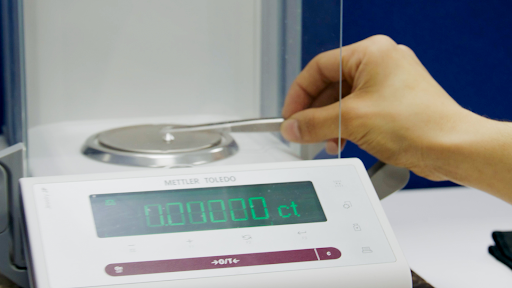

Why is this step crucial? Well, the weight of a diamond is, in essence, the primary factor that establishes its value. A higher carat weight translates to a more expensive stone.
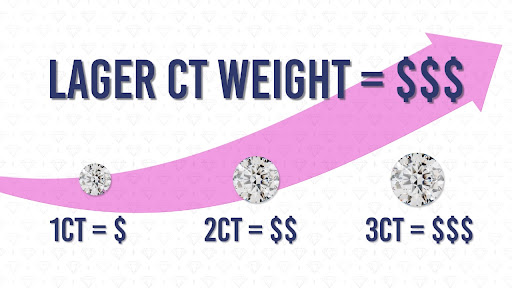

Step 3: Gemprint (GCAL's Exclusive Technology)
Moving on to the third step, we have what's known as "Gemprint”. This is a proprietary technology exclusive to GCAL, and its purpose is to establish the forensic identity of your diamond. You can liken it to a fingerprint.
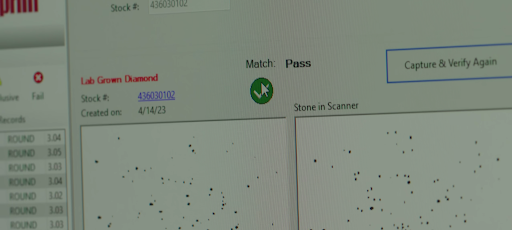

Gemprint serves as the diamond's unique fingerprint, capturing the individual characteristics that set each one apart.
Step 4: Research and Identification
The next step is the critical phase of research and identification. This step is extremely crucial as it is the key to distinguishing between natural diamond, lab-grown diamond, moissanite, or other materials like glass.


Why is this step so crucial? Well, the type of stone—whether natural or lab-grown—significantly impacts its pricing. Moreover, this is the stage where any potential treatments applied to the stone are detected. They also inspect the growth method for laboratory-grown diamonds, distinguishing between CVD and HPHT, which exhibit different growth patterns. This process serves as the cornerstone for determining the true identity of your diamond.
Step 5: Color Grading for Diamonds
It's essential to understand that fluorescence and color are two entirely distinct characteristics, and I'll be creating separate content to delve deeper into fluorescence.
When it comes to color, particularly in white diamonds, they're actually evaluating the absence of color. In this context, diamonds are graded on a scale ranging from D (colorless) to Z. The assessment takes place in a controlled environment with specific lighting conditions. They employ what's called "grading light," and it's essential to ensure the consistency of this light daily before grading diamonds.
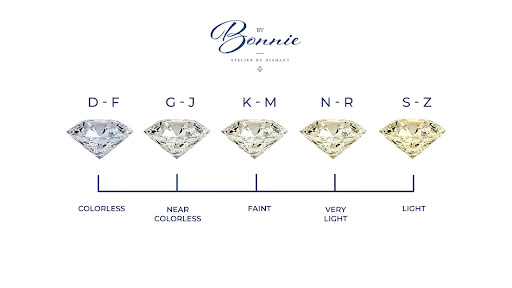

A noteworthy detail is that the color of a diamond is assessed when the stone is placed face down. This is precisely why I always emphasize that when examining a certificate for a diamond's color, you might be missing the full picture. How the color appears when the stone is face down can be quite different from how it looks when it's face up. This is something we at By Bonnie Jewelry always take into account during our curation process, focusing on how the stone looks when viewed from the top.
Step 6: Diamond Clarity Grading
Moving on to clarity, let's demystify what that means for a diamond. Essentially, it's a measure of the inclusions or internal “flaws” within the stone when viewed under ten times magnification.
This assessment aims to determine the quantity of inclusions, how visible they are, and uses these factors to establish a clarity grade. This can range from flawless and internally flawless to VVS1-2, and then down to S1, S2, I1, I2, and so on.
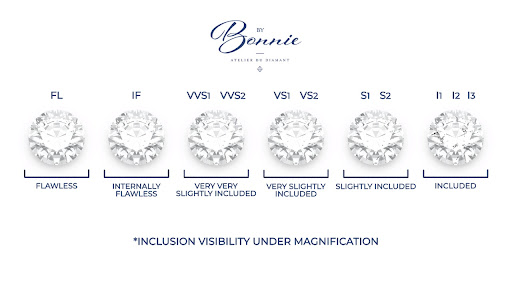

I prefer to use the term "inclusions" rather than "imperfections" because, just like having a birthmark, they don't render a diamond imperfect. Instead, they become a unique part of the diamond's identity.
Step 7: Cut Diamond Grading
Now, let's turn our attention to the crucial factor of cut, often emphasized as the most significant aspect when purchasing a diamond. You'll hear this repeatedly: the cut is paramount. But when we refer to the cut, we're not talking about the diamond's shape; it's about how precisely the stone is cut, the quality of its polish, the symmetry, and the overall proportions that affect its aesthetic appeal and light performance.
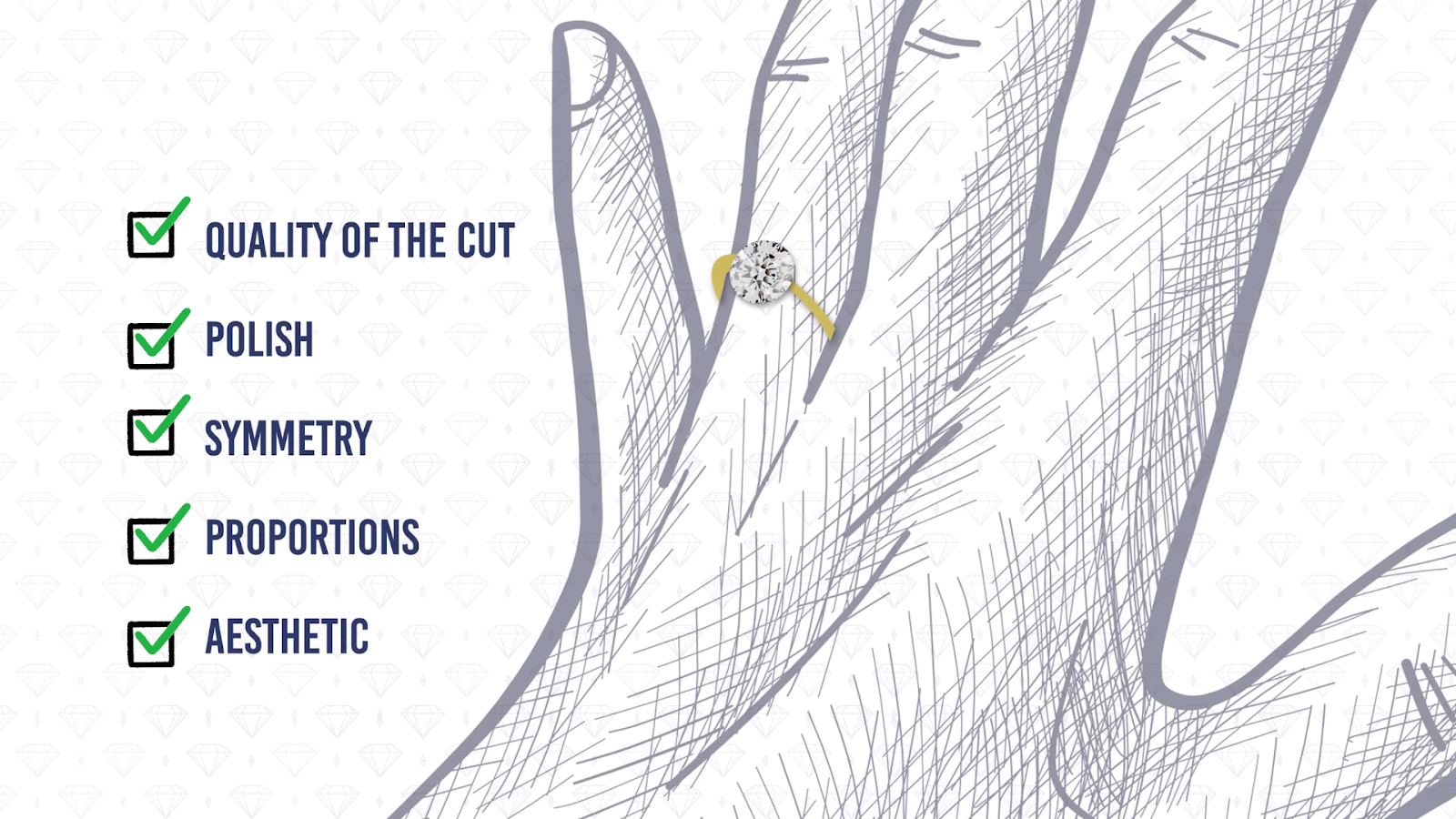

A well-cut diamond ensures that light enters and reflects within the stone optimally, enhancing its brilliance and making it more visually appealing (aka sparkly) to the beholder.
8X Diamond
This goes beyond the realm of your typical diamond. When we talk about "8X," we're venturing into a realm of optical brilliance that transcends the ordinary. What they're measuring for in an "8X" diamond extends to factors such as fire, scintillation, optical symmetry, and the presence of distinctive hearts and arrows patterns. These are just a few of the many attributes GCAL specifically scrutinizes to achieve the perfection of an 8X diamond.
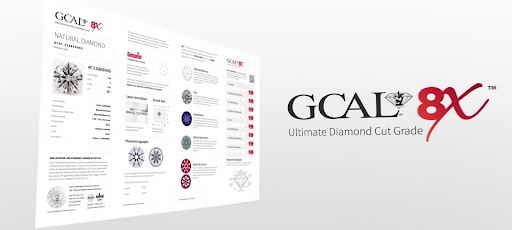

Achieving this level of perfection in a natural diamond is exceptionally challenging, primarily due to the limitations posed by the natural rough diamond crystals. However, this is a characteristic more commonly found in laboratory-grown diamonds. Stay tuned for a dedicated video on my channel where I'll delve deeper into 8X diamonds and how they distinguish themselves from the rest. Don't miss out on that!
Step 8: Laser Inscription on Diamonds
Now, let's talk about laser inscription and what it entails.


Every single diamond possesses a unique set of identifying numbers that match the information on your certificate. These specific sets of numbers are precision-laser inscribed onto the girdle of the diamond. This inscription serves as an invaluable tool for jewelers, as well as consumers like us, to confirm the authenticity of the diamond in question. The equipment used for this process is extremely advanced, making it a reliable means of identifying your diamond.
Step 9: Quality Control and Reverification
Before we move on to the final step, there's a crucial point where, after a diamond has undergone its long journey through this intensive grading process, it undergoes a re-verification process.
Here's where GCAL leverages their unique Gemprint technology once again. Remember, we discussed Gemprint as a way to establish a stone's forensic identity, much like a fingerprint. At this stage, after a diamond has passed between various hands for evaluation, it is re-identified to double-check that the Gemprint matches the initial one from when the stone was first submitted.
This meticulous verification ensures that the diamond that returns is indeed the same one that came in at the beginning of this journey.
Step 10: Diamond Certificate Printing
Finally! After thorough evaluation and grading, all that’s left to do is print the diamond certificate. This document, printed on a unique, ultra high quality textured paper stock, ensures that the diamond's details are recorded in a way that luxuriously compliments the meticulous work done in the lab, and also protects it from counterfeiting. It's the document you take home with you after acquiring your diamond, a tangible symbol of the craftsmanship and precision involved in the world of gemstones.
This journey has been a firsthand glimpse into the passion and expertise that uphold the diamond industry, and it's an honor to share it with you.
Why You Can't Solely Rely on Certificates
To wrap it all up, the diamond certificate is an incredibly valuable tool for consumers seeking to understand the fundamental grading of a diamond. It provides a wealth of information about the stone, making it a great starting point. However, despite everything we just discussed, it's still vital to understand that diamond certificates, thorough as they are, don’t reveal everything.


Personally, I never rely solely on the certificate. As a graduate gemologist myself, I always insist on inspecting a diamond with my own eyes, a practice I consider crucial when choosing a diamond. Because sometimes, shopping for something that looks fantastic on your screen can end up feeling completely different when you try it on. In the world of diamonds, there's a tremendous amount of value and expertise that a seasoned gemologist or jeweler can offer, beyond what's indicated on the certificate.
I once made a video about a $125,000 diamond purchase that unexpectedly revealed a secondary color not listed on the certificate. This illustrates that some features might not be mandatory to include on the certificate. There’s also many times where a diamond can appear better than how it’s described on its certificate. So it's essential to not fixate on the details of a certificate, but to find a jeweler you trust to help take you beyond what’s written.
While certificates are immensely helpful, especially for those who aren't diamond experts, I encourage you to look beyond them. There's so much more to the story, and that's where the magic truly lies.
If you're on the quest for your perfect diamond, I invite you to explore our curated selection at bybonniejewelry.com. We're here to guide you in your journey to find the ideal ring that reflects your unique style and preferences. Don't miss out on the exceptional experience we offer beyond the certificate. Thank you for joining me on this enlightening journey, and I look forward to assisting you in discovering your dream ring!








